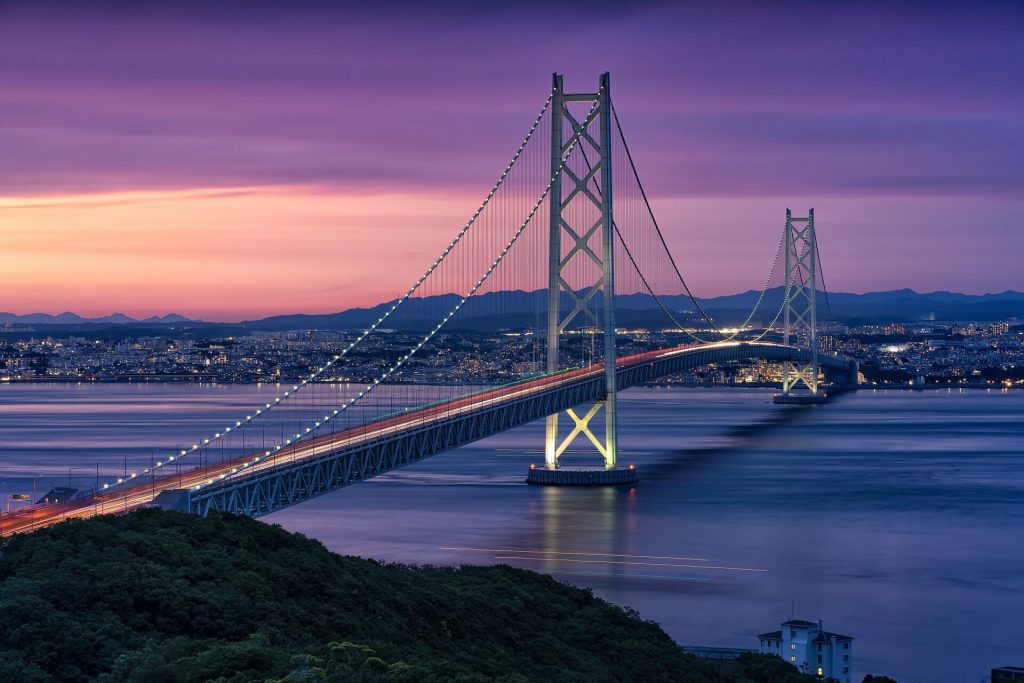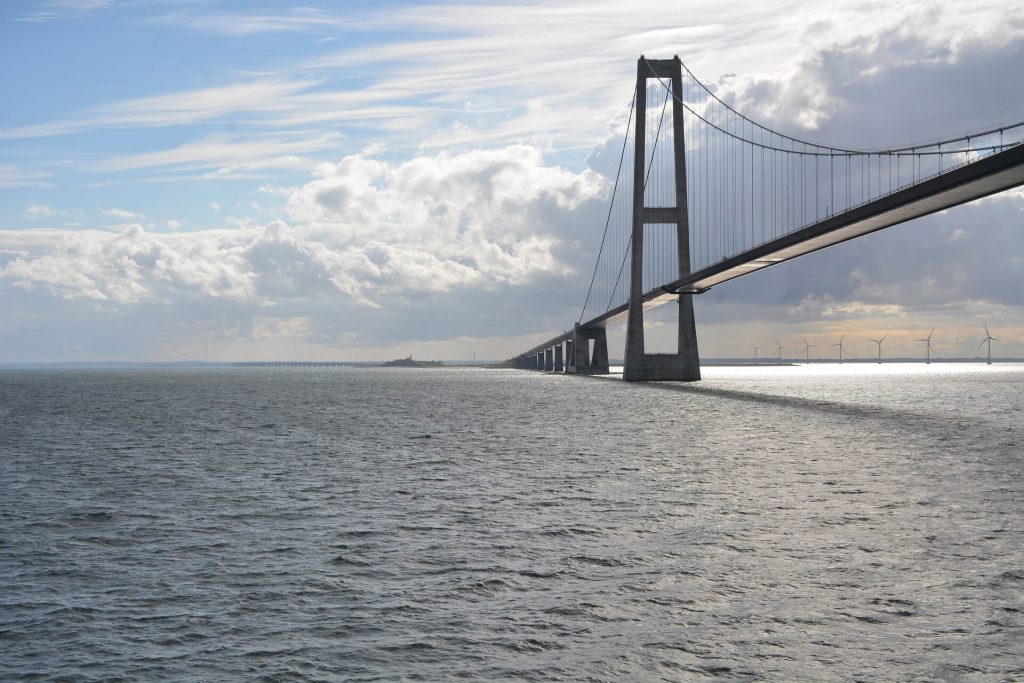Tsing Ma Bridge, in Hong Kong, is the world’s sixth largest suspension bridge, making it one of the longest bridges in the world. This re-established the reputation of the Cleveland Bridge in long span bridge construction. The name Tsing Ma is derived from two of the islands in Hong Kong, namely Tsing Yi and Ma Wan. The Tsing Ma Bridge links Tsing Yi Island on the east to Ma Wan Island on the west over the Ma Wan Channel.
With the world’s longest road and rail span it was the culmination of a colossal international effort by a world-wide team. Getting into its structure is quite an adventure. It comprises of two decks and carries both road and rail traffic, which also makes it the largest suspension bridge of this type. It includes twin three lane carriageways and two rail tracks over the Ma Wan Channel in Hong Kong Harbor to connect the new international airport at Chep Lap Kok to the centre of Hong Kong.
One of the two decks is the upper deck that features 41 meters (135 ft) wide that carries a dual three-lane carriageway i.e. six lanes for roadways. The Lower deck, on the other hand comprises of two tracks of railway and a two-lane emergency roadway to maintain and diversify the traffic during typhoon conditions. This bridge is closely monitored by the Wind and Structural Health Monitoring System (WASHMS). The road traffic does not need to be diversified during high winds, however, rail transport gets highly affected during such situations.
Tsing Ma Bridge has a main span of 1,377 meters (4,518 ft) which is more than the famous Golden Gate Bridge in San Francisco, with the total length of about 2.2 km and posses a height of 206 meters (676ft). Seeing its utility and bearing typhoonic conditions, it becomes important to say that its construction within five years was a great challenge and a great accomplishment. This left quite a remark on the history of technology.
Few facts about Tsing Ma Bridge
- Foundations and the construction of the bridge tower: one tower is located on Tsing Yi side and the other on a man-made island 120 m from the coast of Ma Wan Island. Both pylons are at a height of 206m above sea level and founded on relatively shallow bedrock. The towers are two-legged with trusses at intervals where the legs were constructed with high-strength concrete, using a slipform system in a continuous operation.
- Anchorages: the tension of pulling forces in the main suspension cables is taken by anchorages located at both ends of the bridge. They are massive concrete structures deeply seated on bedrock on the landside of Tsing Yi and Ma Wan Island. The total weight of concrete used in the two anchorages is about 300,000 tonnes which bear all the weights of the suspension.
- Cables: The cables are very strong and a total techno-freak. A total of 70,000 galvanized wires of 5.38 mm diameter were placed and adjusted to form the 1.1 m diameter. Mainly, the cables were constructed by an aerial spinning process that includes drawing wires from a constant-tension supply, and pulling loops of these wires from one anchorage to the other, passing a 500-tonne cast-iron saddle on top of each bridge tower seating the cable.
- Suspended deck: The steelwork for the deck structure was fabricated in Britain and Japan. After delivery, they were further processed and assembled in Don Guan of China into standard deck modules. A total of 96 modules, each 18 m long and about 480 tonnes in weight, were prepared.
- Approach span on Tsing Yi side – The first span was assembled on the ground and raised into position using strand jacks. Further erection then processed in cantilever in smaller sections. An expansion joint which allowed for a maximum thermal movement of 850 mm was also provided and located inside the approach span section. It is truly amazing and one of the worlds longest bridges.



